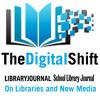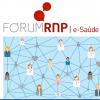Recent posts
The active librarian community in Ohio shouldn’t surprise me anymore, but it still does when I discover yet another local group or event dedicated to a niche aspect of libraries. Ohio IR Day on Friday, October 24, 2014, exemplified the communal desires of Ohio librarians. Even , there were over 30 participants for this all-day event, most from academic libraries with one from the Ohio History Connection (previously the Historical Society) and even a Kentucky librarian
Ask college librarians how prepared they think incoming freshmen are for college-level work, and their answers are sadly consistent: today’s students aren’t prepared. Bridging that gap is a common interest for OhioLINK, Ohio’s academic library consortium, and INFOhio, Ohio’s PreK-12 digital library. Drawing on their 20-year history of working together–along with public libraries and the State Library of Ohio–to cost-effectively provide research resources to all Ohioans, OhioLINK and INFOhio are now investigating the next step. Using a common tool–EDS–but two different approaches, OhioLINK and INFOhio are transforming research with search and discovery and helping ease the transition to college for Ohio’s students.
Today we look at the world's largest telecommunications equipment maker placing more focus on broadband expansion, the number of student loans in default declining, online learning efforts through the University of Florida, Australia's new supercomputer, Youngstown's STEM school, and Harvard-MIT partnering to offer high school students online courses...
Today's Digest focuses on the University of Virginia's new computing cluster and big data research, STEM jobs open for Women in South Carolina, startup founders applying educational experiences, University of Arkansas' diverse freshman class in the college of engineering, and Hilliard, OH looking to bring in an Amazon data center...
The staff of the Ohio Academic Resources Network (OARnet), a member of the Ohio Technology Consortium (OH-TECH), has been working with their counterparts at The Ohio State University to deploy a Science DMZ to help accelerate research at the university. A Science DMZ is a computer sub-network that is structured to be secure, but operates outside of the performance restrictions of a firewall. The two-year funding for the project comes from the National Science Foundation’s Campus Cyberinfrastructure – Network Infrastructure and Engineering Program (CC-NIE) program.
- ‹ previous
- 25 of 54
- next ›







